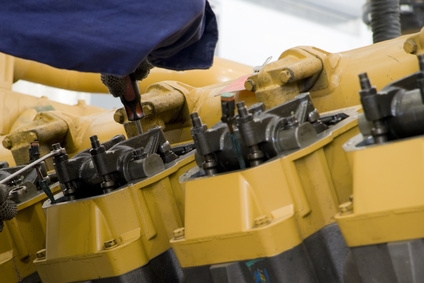
An engine's exhaust silencer must suit that particular engine's noise requirements. It must also suit the rate of exhaust flow. Too small a silencer will insufficiently muffle an engine's exhaust pipe. Too large a silencer will magnify the engine's back pressure, hurting engine performance. Determine your silencer's size from the gas's flow area. A number of factors affect the flow area, including the gas's temperature, the back pressure, the gas flow rate and the target silencer pressure drop coefficient.
Square the engine's gas flow rate, measured in cubic feet per minute. If, for instance, 3,000 cubic feet of gas flow per minute: 3,000 ^ 2 = 9,000,000.
Multiply your answer by the pressure drop coefficient. If you engine has a pressure drop coefficient of 4.2: 90,000 * 4.2 = 37,800,000.
Multiply by 530: 378,000 * 530 = 20,034,000,000.
Add 460 to the exhaust gas's temperature, in degrees Fahrenheit. If the gas has a temperature of 1,100 degrees: 1,100 + 460 = 1,560.
Multiply by the engine's back pressure, measured in inches of water. If the back pressure is 20 inches of water: 1,560 * 20 = 31,200.
Multiply your answer by 16,040,025: 31,200 * 16,040,025 = 500,448,780,000.
Divide 20,034,000,000 by 500,448,780,000 = 0.04.
Find the square root of your answer: 0.04 ^ 0.5 = 0.2. This answer is your flow area, measured in square feet.
Divide your answer by pi: 0.2 / pi = 0.064.
Find the square root of your answer: 0.064 ^ 0.5 = 0.253.
Multiply your answer by 2. 0.252 * 2 = 0.506. This answer is your silencer's diameter, measured in inches.